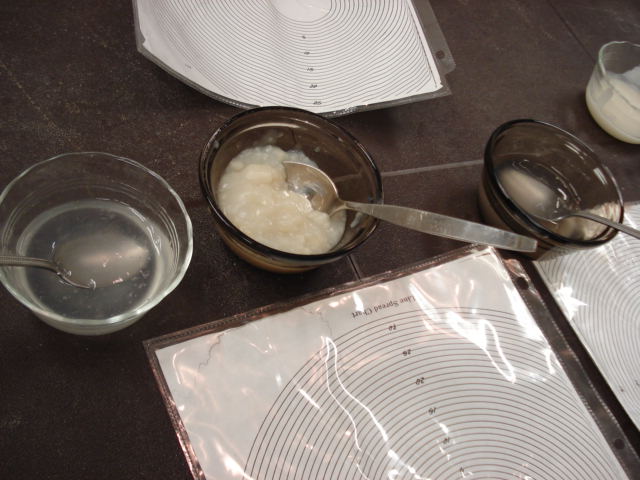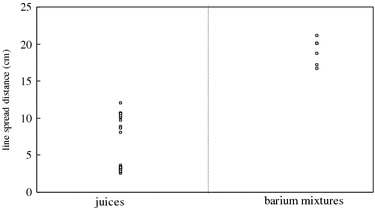

To measure thickening power a line spread test can be conducted using a line spread apparatus. The gel is measured with a ruler in its container and again after being inverted onto a plate. To test for gel formation a percent sag test can Mundt 2 be performed, which measures the gel strength. Gelatinized starches can exist in a flowing, pourable form as a sol or during cooling the paste may form a gel, a network where liquid becomes trapped (2). After gelatinization and pasting, gel formation occurs (2). The process of gelatinization (thickening) occurs when starch is suspended in cold water and then is continuously heated (2). In cold water starch granules do nothing, but when starch molecules are heated in water the bonds break down (2). The starch functions being tested in these experiments were starch gelatinization and gel formation.

There are many functional properties of starch in cooking and baking including nutritional value, thickening, structure, non-enzymatic browning, emulsifying, retaining moisture, and forming and strengthening films, among many other functions (2). Some sources of starch include corn, wheat, rice, potato, and tapioca. Introduction Starch, long chains of linked glucose molecules, is a complex carbohydrate that is made up of amylose, the linear component of starch, and amylopectin, the branched component of starch (2). Line spread and percent sag tests were performed at numerous points during the experiments to determine the effect that temperature changes and added ingredients have on starch gelatinization. This was achieved using various starches and three separate procedures in which temperature and added ingredients were altered. Mundt 1 Natalie Mundt Experimental Foods Lab Section 3 OctoGelatinization of Starch Lab Report Purpose The purpose of the gelatinization of starch laboratory exercise was to observe the effect of temperature and added ingredients on starch gelatinization.


 0 kommentar(er)
0 kommentar(er)
